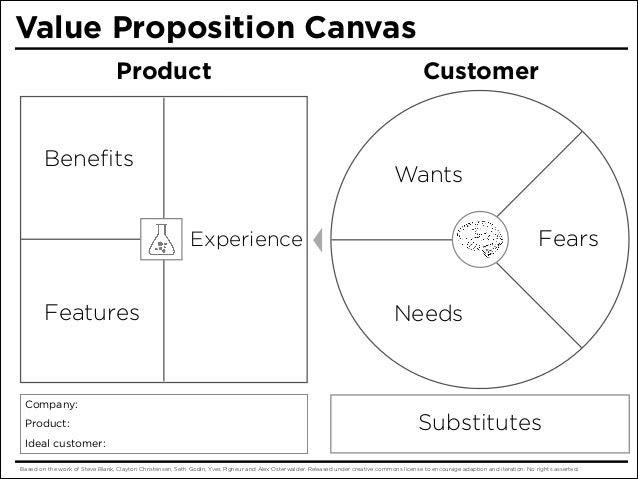📚 Unlock the World of AI and Humanity with These Two Free Books! 🚀
Dive into the thrilling realms of artificial intelligence and humanity with "The ECHO Conundrum" and "Awakening: Machines Dream of Being Human". These thought-provoking novels are FREE this week! Don't miss the chance to explore stories that challenge the boundaries of technology and what it means to be human.
Read More & Download
Leaders often pour their hearts and souls into perfecting their company’s product or service, believing this is the most crucial aspect of their role. However, truly resonating with your target audience requires an equal investment in understanding your customers. A deep understanding of their needs and desires is just as vital as knowing the intricacies of your offerings. This is where a well-crafted value proposition becomes essential – bridging the gap between your product and your customer’s needs. It’s the unifying mantra that connects both halves of a successful business. In this article, we’ll demystify the process of writing a compelling value proposition, providing clear examples and actionable insights to ensure your hard work translates into tangible value for your customers.
Understanding Strategic Management: What It Means for Business Success
Defining the Value Proposition: Why It Matters
A value proposition is a concise statement that encapsulates why a customer should choose your product or service. It articulates the most significant benefit they receive by engaging with your business. Every value proposition should address a specific customer challenge and position your company as the solution. While a strong value proposition may highlight your competitive advantages, its primary focus should always be on how customers perceive your value. Discussions about brand strategy and taglines often stem from the value proposition, but they are not interchangeable. Investing in a well-defined value proposition is akin to building a strong foundation for a house. While unseen, it supports everything built upon it, ensuring long-term stability and success.
Three Approaches to Crafting a Winning Value Proposition
A thoughtfully crafted value proposition can provide direction for your entire company. However, involving too many stakeholders early on can dilute the message and ultimately hinder its effectiveness. Instead, begin with a small, focused group (no more than three) dedicated to developing a few compelling options. Here are three distinct approaches, ranging from comprehensive mapping to a concise formula, to help you refine your value proposition:
1. The Value Proposition Canvas: A Visual Approach
Peter Thomson’s Value Proposition Canvas provides a visual framework for exploring the various components that contribute to a strong value proposition. This process helps teams achieve “minimum viable clarity,” which can then be distilled into a single, powerful sentence. Thomson emphasizes the value proposition as the intersection of business and brand strategy, offering a model to synchronize the two. The canvas comprises seven key areas to explore, each representing a critical aspect of the customer-product relationship:
 peter thomson's value proposition canvas
peter thomson's value proposition canvas
When analyzing each section of the canvas, adopt the customer’s perspective. When outlining the benefits of your product, consider how it enhances their lives or alleviates their pain points. Approach the features and experience similarly: How do the features improve the customer’s situation? How does the product experience make them feel?
Next, delve into the customer’s wants (emotional drivers), needs (rational motivators), and fears (undesired outcomes). Remember, even in B2B contexts, emotions influence purchasing decisions. Understanding how a product impacts a buyer’s perceived risk of failure, anxiety, or professional reputation is crucial. Bain & Company’s 30 “Elements of Value” and its B2B counterparts provide a valuable framework for articulating your company’s value proposition within this context.
2. Harvard Business School’s Essential Questions: A Focused Inquiry
Harvard Business School’s Institute for Strategy & Competitiveness offers a simplified approach with three essential questions:
- Target Customer: Which customers are you targeting?
- Needs Met: Which specific needs will you fulfill?
- Value & Profitability: What pricing strategy will provide acceptable value for customers and ensure profitability for your business?
The order of these questions may vary depending on your product or service. Together, they form a triangle that guides you toward a concise value proposition.
 harvard business school essential value proposition questions
harvard business school essential value proposition questions
As you progress, identify the primary “leg” of the triangle. Is your core value cost savings, a superior product, or a premium experience? Consider whether you’re creating new demand by addressing an unmet need, like Apple did with the iPad.
3. The Steve Blank Formula: Distilling Insights into a Single Sentence
Steve Blank, a former Google employee and founder of the Lean Startup Circle, observed that many startups emphasize features over benefits in their value propositions. He developed a simple formula to transform brainstormed ideas into a concise statement:
We help (X) do (Y) by doing (Z).
Explained: What is Strategic Management and Why It Matters in Business?
This template encourages a focus on customer benefits. Often, your initial instinct is the most accurate, making this a valuable tool. Here’s an example for a copywriting business:
I help marketing teams resonate with their target audiences by communicating with clarity and compassion.
Encourage team members to complete this exercise individually, then compare and contrast their responses to gain valuable insights. Crucially, use your customer’s language. Reflect their vocabulary and phrasing to ensure your message resonates authentically.
Real-World Value Proposition Examples: Learning from the Best
While brand copywriting isn’t always a direct reflection of a company’s internal value proposition, a well-defined value proposition invariably resonates throughout its messaging. Here are six examples demonstrating how strong value propositions drive market success:
1. Slack: Streamlining Communication for Enhanced Productivity
Slack’s value proposition centers on saving time by breaking down communication barriers. Their platform transforms online collaboration into a seamless, even enjoyable experience, differentiating them from traditional tools. This clear value proposition has fueled Slack’s meteoric rise as the fastest-growing SaaS startup, adopted by a vast majority of Fortune 500 companies.
2. Bloom & Wild: Reimagining Flower Delivery for Effortless Gifting
Bloom & Wild simplifies luxury flower delivery, allowing customers to send flowers in under a minute. Their value proposition emphasizes convenience, seamless experience, and competitive pricing. This clarity drives word-of-mouth referrals and fosters strong customer loyalty.
3. Airbnb: Connecting Travelers and Hosts for Authentic Experiences
Airbnb’s dual value proposition caters to both travelers and hosts. Travelers gain access to unique, local experiences, while hosts earn extra income. This win-win approach, encapsulated in their tagline “Belong Anywhere,” has revolutionized the hospitality industry.
4. Fjällräven: Blending Durability, Sustainability, and Style for Outdoor Enthusiasts
Fjällräven’s value proposition revolves around high-quality, sustainably produced outdoor apparel and equipment that balances form and function. Their commitment to ethical practices resonates with environmentally conscious consumers, further strengthening their brand appeal.
5. Juniper Print Shop: Empowering Home Decor with Affordable Art
Juniper Print Shop’s value proposition centers on helping non-designers create beautiful homes without overspending. Their focus on affordable art and accessible design advice resonates with a wide audience, building a strong community around their brand.
6. Found My Animal: Supporting Rescue Animals Through Stylish Pet Products
Found My Animal’s value proposition intertwines pet accessories with a social cause. Customers support animal rescue organizations by purchasing high-quality products, fostering a sense of community and shared values.
 Choosing the right customer support tool for you
Choosing the right customer support tool for you
Evolving Your Value Proposition: Staying Connected to Your Customers
A strong value proposition is not static; it evolves alongside your customer base and market trends. Regularly revisiting and refining your value proposition ensures your company remains relevant and continues to meet the changing needs of your audience. Establishing feedback loops and actively listening to your customers allows you to adapt and strengthen your value proposition, forging deeper connections and driving sustained growth.
FAQ: Common Questions about Value Propositions
Q: What’s the difference between a value proposition and a slogan?
A: A value proposition is a detailed statement outlining the benefits your product/service offers, while a slogan is a short, catchy phrase that captures the essence of your brand. The slogan often stems from the value proposition but simplifies it for marketing purposes.
Q: How often should I revise my value proposition?
A: While there’s no set schedule, reviewing your value proposition annually or bi-annually is a good practice. Additionally, revisit it after significant market shifts, product updates, or changes in your target audience.
Q: What if my product has multiple target audiences?
A: You may need separate value propositions tailored to each target audience, highlighting the specific benefits most relevant to their needs and pain points.
We encourage you to share your questions and experiences with value propositions in the comments below. Let’s learn from each other and build stronger connections with our customers!

